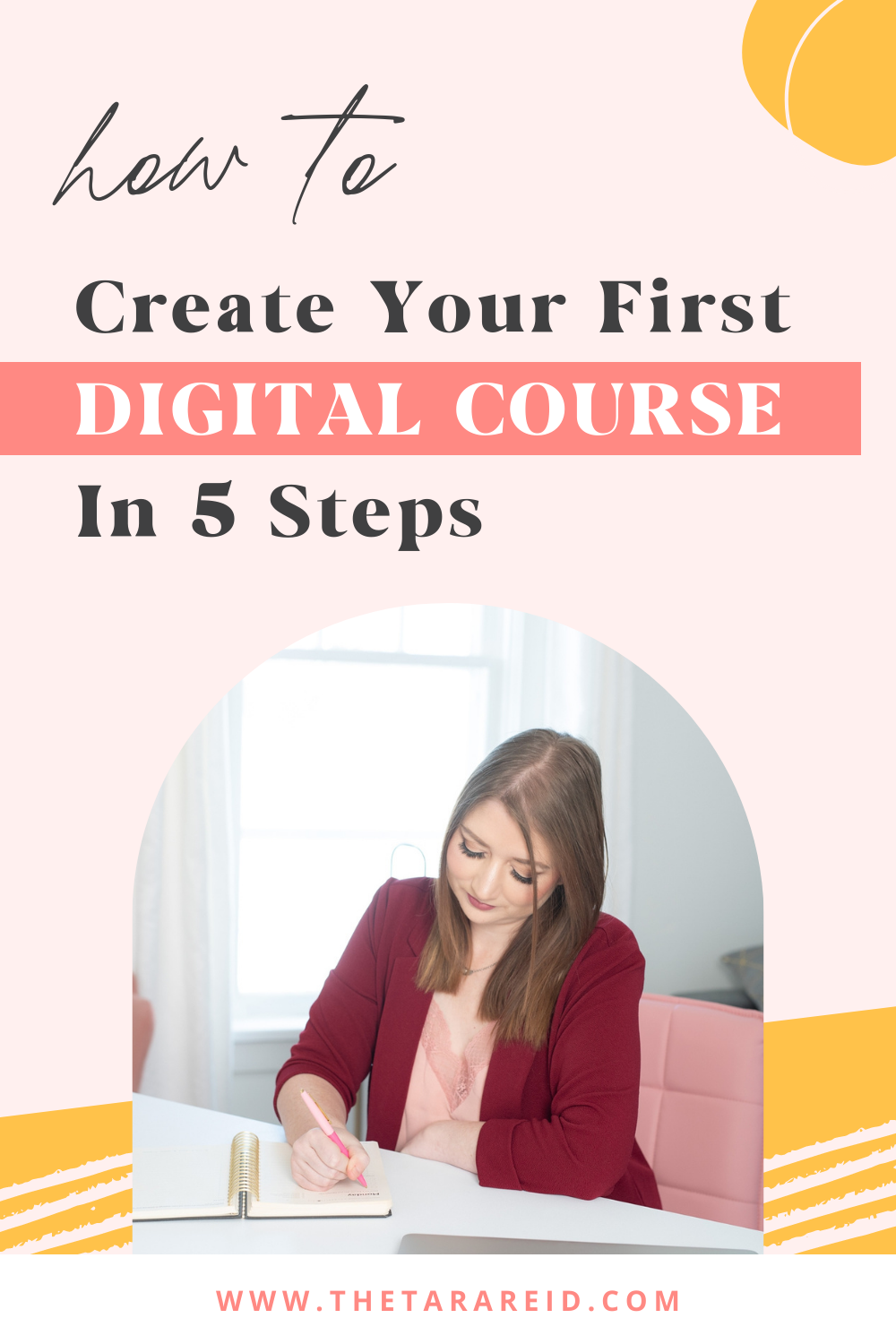Struggling to get the results you want from your emails?
Discover 15 simple yet powerful ways to elevate your email marketing and start seeing real engagement!
Grab your freebie!
Blog Categories
Helping small business owners, virtual assistants, and creative entrepreneurs grow their business.
Hi, I'm Tara! I'm a multi-passionate business and marketing coach.
learn more + get a copy:
Creating a digital course is a fantastic method for creating an additional revenue stream. You can just create one course and sell it over time without having to do more work. However, creating a digital course can be overwhelming and downright scary.
In this post, I will be sharing the most important steps to creating your first (or next) digital course. Make sure to follow these steps to make the process a little easier!
Disclaimer: I earn from qualifying purchases. Some of the links on my website are affiliate links, which means, at no additional cost to you, I will earn a small commission if you click through and make a purchase.
Step One: Determine Your Course Topic
For your course topic, it’s not just the broad idea of the course. You want to figure out who it’s for, what stage they are at right now, and how they are feeling.
Don’t forget to get really specific on the type of course you want to create. Is this going to be a mini-course or an extensive signature course covering many aspects of one topic?
Here’s an example of each:
- Instagram Reels Course for Introverts would likely be a mini-course or offer as it focuses on Instagram as the broad topic, but it narrows the focus on how to leverage reels specifically for introverts.
- Instagram Academy would likely be a signature course as it would cover many topics under the Instagram umbrella, such as creating content, engagement, reels, stories, live videos, hashtags, etc.
Step Two: Research Your Digital Course Idea
Every new digital course idea should always start with both market research and competitor research.
Market research – you will connect with people who would be your ideal course students. You can get valuable insights on what they are struggling with, what would really help them, and the language they are using. You can do this through Google forms or Zoom interviews.
Competitor research – will allow you to see what similar courses or offers are already out there in the market with competitor research. Competitor research aims to see how you can create something better, more targeted, or with your unique spin on it.

Step Three: Your Course Promise
Use the market research you performed in step two to help you determine what you are promising someone who takes your course.
For the Instagram Reels for Introverts example, the course promise might be:
Instagram Reels for Introverts will give you a step-by-step system to help you become more visible and show up on reels confidently and authentically without dancing or pointing.
Step Four: Validate Your Digital Course Idea
There are a couple of ways you can go about validating your course idea.
The most helpful option is to pre-sell your course. This means that you have your course outlined and the deliverables planned, but you haven’t created anything yet. You have to avoid countless hours creating a course that isn’t going to sell, so pre-selling is one of the best ways to validate that people are willing to pay for your online course.
The other validation method is conducting a lot of market research. Tell your email list what you are working on and see their response. Before launching your new digital course idea, you could even start a waitlist to see how much interest you receive.
Step Five: Digital Course Creation
After all of the research, planning, and brainstorming, it’s now time to actually create your digital course!
Map out your modules, lessons, and any bonuses, and let’s start recording. Remember, each lesson should have a purpose. The number one reason people don’t finish a course is that there is too much content, and it becomes overwhelming.
Start small and strategically with your course content. Focus on progress instead of perfection; you can always add new lessons and content later.
What’s your biggest takeaway? I’d love it if want to share with me and DM me on Instagram!

Tara Reid is a multi-passionate business and marketing strategist for introverted entrepreneurs who want to grow without relying on hustle culture or social media. With 18+ years of online business experience, she helps course creators, service providers, and digital product sellers build sustainable businesses through evergreen marketing, blogging, SEO, Pinterest, and email.
As the founder of the Introvertpreneur Club, Tara’s mission is to show heart-centered entrepreneurs that you don’t have to be loud to be successful. You just need the right strategies that fit your personality.
When she’s not supporting clients or creating new resources, you can find her at home in Canada with her three rescue dogs, a cup of coffee in hand, dreaming up her next project.
The Introvertpreneur Podcast
listen in to the top rated business podcast that is designed for introverted entrepreneurs who want to grow + scale in a more sustainable and fun way!
Top rated podcast
This one's on me. Complimentary free stuff coming right up.
leaving so soon?
Look behind the curtain and see exactly what I do every week, month, and quarter, to market my business without social media (in under 5 hours per week)!
The Quiet Marketing Playbook
Take this free quiz and learn what your superpower is as an entrepreneur. You'll also get a curated list of my best resources and tips for using your superpower to your advantage!
What's your Introverted Superpower?
Best Free Resources:
dig into 'em now!
A business strategist and marketing coach who focuses on helping course creators, coaches, and service providers, build sustainable businesses without social media.
